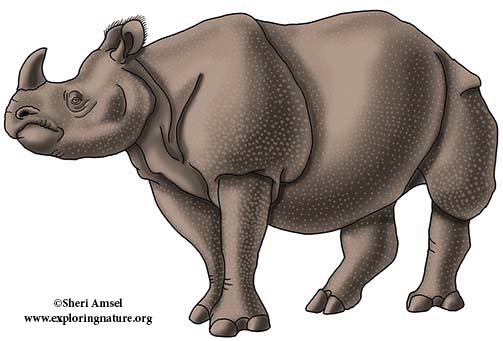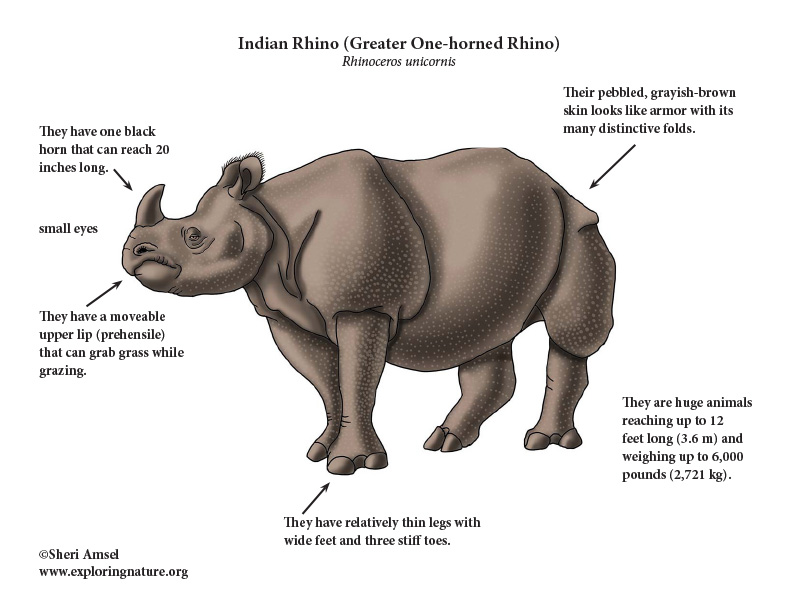

They are found in Northeastern India, Pakistan and Nepal.
They live in grasslands, shrublands, open forest and swamps.
They are huge animals reaching up to 12 feet long (3.6 m) and weighing up to 6,000 pounds (2,721 kg). They have one black horn that can reach 20 inches long. Their pebbled, grayish-brown skin looks like armor with its many distinctive folds. They have a moveable upper lip (prehensile) that can grab grass while grazing.
Males live in alone (solitary) except when mating. Females are also solitary except for their calf. They may be seen around each other while wallowing in the mud or our grazing. They can be aggressive and charge each other using their horn. They are active at night, at dawn and dusk and rest during the heat of the day.
They are herbivores eating grass, leaves, fruits and aquatic (water) plants.
The only predator that can really challenge an Indian rhino is man and they were almost hunted to extinction for their horn.
Females have calves about every 3 years. They are pregnant for about 16 months (gestation). They have one calf and nurse them for 1-1.5 years. Breeding occurs any time of year.
They can live about 40 years in the wild. They are listed as vulnerable after recovering from near extinction from hunting.
Kingdom: Animalia
Phylum: Chordata
Subphylum: Vertebrata
Class: Mammalia
Order: Perissodactyla
Family: Rhinocerotidae
Genus: Rhinoceros
Species: Rhinoceros unicornis
When you research information you must cite the reference. Citing for websites is different from citing from books, magazines and periodicals. The style of citing shown here is from the MLA Style Citations (Modern Language Association).
When citing a WEBSITE the general format is as follows.
Author Last Name, First Name(s). "Title: Subtitle of Part of Web Page, if appropriate." Title: Subtitle: Section of Page if appropriate. Sponsoring/Publishing Agency, If Given. Additional significant descriptive information. Date of Electronic Publication or other Date, such as Last Updated. Day Month Year of access < URL >.
Amsel, Sheri. "Rhinoceros (Indian) or Greater One-horned Rhinoceros" Exploring Nature Educational Resource ©2005-2024. December 14, 2024
< http://www.exploringnature.org/db/view/Greater-One-horned-Rhino-Indian-Rhinoceros >

